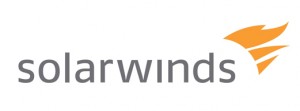Migrating from state and local governments to federal agencies and back again, data is a dynamic resource. And that presents unique security challenges and the potential for what Scott Pross, Vice President of Technology with SolarWinds, calls “data spillage.”
It happens when agencies share information with people who don’t need it. Organizations, he said, must ensure that they’re sharing data only with approved and authorized people based on use cases that define who should access what and why. “It needs to be shared in a very secure and specific way to ensure we’re keeping citizens safe,” Pross explained. If your devices aren’t secure, your data is unprotected.
The Foundation
Network security should be considered from the ground up during project development, he said. He compared it to building a house: “You want to ensure the foundation is very stable. You want to ensure that it performs well, is reliable, and is secure.”
That initial effort “is going to slow you down a bit, there’s no question,” Pross acknowledged. But in the end, you’ll have a solution that won’t need frequent patching. Once it’s complete, you’ll have technology that’s going to stand the test of time, he said.
SolarWinds — which allows agencies to administer, manage, and monitor their networks and infrastructure assets with a single suite of tools — can alert organizations to security vulnerabilities before they become problems, he said. That greatly protects agencies and their data. But don’t confuse the SolarWinds solution, Pross cautioned, with simple network monitoring.
Observability
Often called a “single pane of glass” approach, monitoring tells you what’s happening on your system — but not why it’s occurring, and that’s the more important question, he said. The SolarWinds observability tools identify issues on different parts of a network, find a common denominator and direct the agency’s attention to where it’s needed, Pross explained.
With observability, he said, you can “correlate all the different aspects of your network together and… minimize the amount of work your engineering team needs to do.” And you can eliminate what he called tool sprawl, “where you have a different tool for everything, and you’ve got to go to 10 different tools to see what each one’s doing when there’s a problem.” With one platform, agencies can ensure that all pieces of their infrastructure run securely.
AI Opportunities
In the future, AI will allow agencies to be more proactive, Pross said. Systems will self-remediate, automatically resolving security issues before telling humans that the problems even exist. Ultimately, AI will identify trends and determine how to prevent those issues from arising.
“It’s going to keep snowballing to the point where AI will really help us … change how we do things, so we don’t even see those problems in the future,” Pross said. “The AI stuff we’re seeing right now is incredible but it really is just the beginning.”
This article appeared in our guide, “Agencies of the Future: How to Break Down Barriers to Growth.” For more about how governments are embracing change, download it here:

0 Commentaires